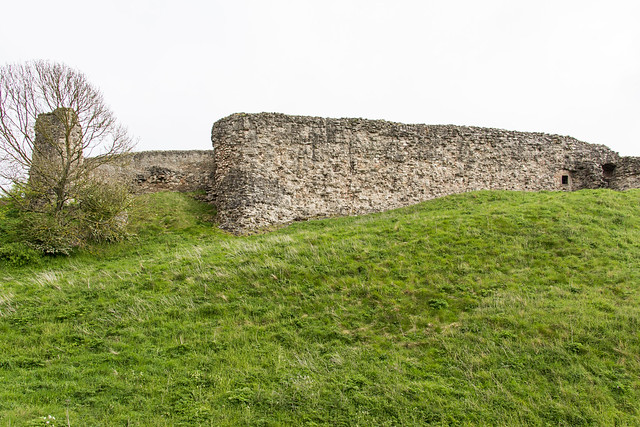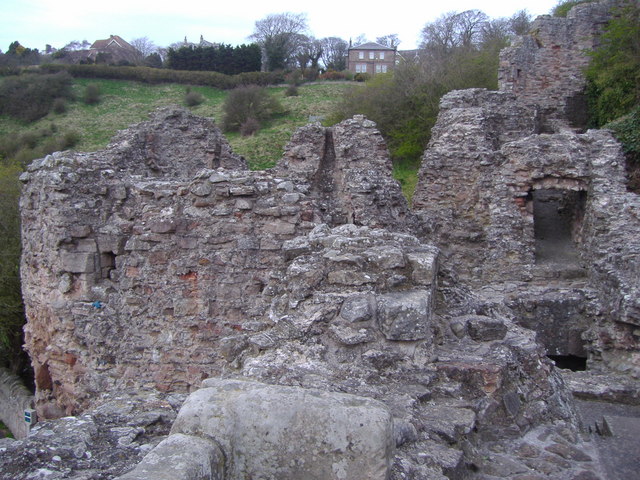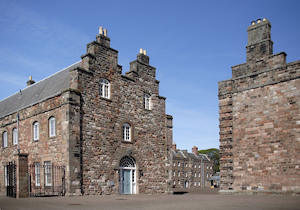Berwick Castle, Berwick-upon-Tweed, Northumberland, England

-
Description
Grade I listed and scheduled historic building. "Berwick Castle is a ruined castle in Berwick-upon-Tweed, Northumberland, England. The castle was founded in the 12th century by the Scottish King David I. In 1296–8, the English King Edward I had the castle rebuilt and the town fortified, before it was returned to Scotland. In November 1292, King Edward announced in the great hall before the full parliament of England and many of the nobility of Scotland his adjudication in favour of John Balliol of the dispute between him, Robert the Bruce and the count of Holland for the Crown of Scotland. 1330 "Domino Roberto de Lawedre" of the Bass, described as Custodian or Keeper of the Marches and the Castle of Berwick-upon-Tweed, received, apparently upon the termination of his employment there, £33.6s.8d, plus a similar amount, from the Scottish Exchequer. The town and castle changed hands several times during the English-Scottish conflicts. In 1464 the Exchequer Rolls of Scotland record that Robert Lauder of Edrington was paid £20 for repairs made to Berwick Castle. In the 16th century, during the reign of Elizabeth I, the walls were strengthened with the addition of two semi-circular artillery flanking towers, one at the river's edge and the other on the angle of the curtain wall. The castle's location in the hotly disputed border country between England and Scotland made it one of the most important strongholds in the British Isles, and it had an eventful history. As a major tactical objective in the region, the castle was captured by both the English and Scots on a number of occasions and frequently sustained substantial damage; Edward I used it as his headquarters during the course of his invasions of Scotland. The castle also changed hands in less violent circumstances when the English King Richard I sold the castle to the Scots, to help fund the Third Crusade. The castle finally fell into English hands in the last week of August 1482. After invading Scotland following a pact with the Duke of Albany, Richard, Duke of Gloucester captured the castle from Patrick Hepburn, Lord Hailes. The construction of modern ramparts around Berwick in the sixteenth century rendered the castle obsolete and its later history is one of steady decline. Large parts of the structure were simply used as a quarry (notably for the construction during the Commonwealth of the parish church, Holy Trinity), while in the nineteenth century, the great hall and much of what remained was demolished to make way for Berwick-upon-Tweed railway station. The railway platforms now stand where King Edward took oaths of allegiance from Scottish nobility in 1296, marked by a large notice to that effect. The principal surviving part of the structure is the late thirteenth century White Wall and the steep and long flight of steps known as the Breakneck Stairs. It is now administered by English Heritage. Berwick-upon-Tweed (/ˌbɛrɪk-/; Scots: Sooth Berwick, Scottish Gaelic: Bearaig a Deas) is a town in the county of Northumberland. It is the northernmost town in England, at the mouth of the River Tweed on the east coast, 2 1⁄2 miles (4 kilometres) south of the Scottish border (the hamlet of Marshall Meadows is the actual northernmost settlement). Berwick is approximately 56 mi (90 km) east-south east of Edinburgh, 65 mi (105 km) north of Newcastle upon Tyne and 345 mi (555 km) north of London. The 2011 United Kingdom census recorded Berwick's population as 12,043. A civil parish and town council were created in 2008 comprising the communities of Berwick, Spittal and Tweedmouth. Berwick was founded as an Anglo-Saxon settlement during the time of the Kingdom of Northumbria, which was annexed by England in the 10th century. The area was for more than 400 years central to historic border wars between the Kingdoms of England and Scotland, and several times possession of Berwick changed hands between the two kingdoms. The last time it changed hands was when Richard of Gloucester retook it for England in 1482. To this day many Berwickers feel a close affinity to Scotland. Berwick remains a traditional market town and also has some notable architectural features, in particular its medieval town walls, its Georgian Town Hall, its Elizabethan ramparts, and Britain's earliest barracks buildings, which Nicholas Hawksmoor built (1717–21) for the Board of Ordnance." - info from Wikipedia. Summer 2019 I did a solo cycling tour across Europe through 12 countries over the course of 3 months. I began my adventure in Edinburgh, Scotland and finished in Florence, Italy cycling 8,816 km. During my trip I took 47,000 photos. Now on https://www.instagram.com/billyd.wilson/" rel="noreferrer nofollow">Instagram. Become a patron to my photography on https://www.patreon.com/billywilson" rel="noreferrer nofollow">Patreon. -
Owner
Billy Wilson Photography -
Source
Flickr (Flickr) -
License
What does this mean? Attribution-NonCommercial License
-
Further information
Link: https://www.flickr.com/photos/32132568@N06/50006745158/
Resource type: Image
Added by: Peter Smith
Last modified: 2 years, 8 months ago
Viewed: 484 times
Picture Taken: 2019-05-17T10:52:14 -
Co-Curate tags










